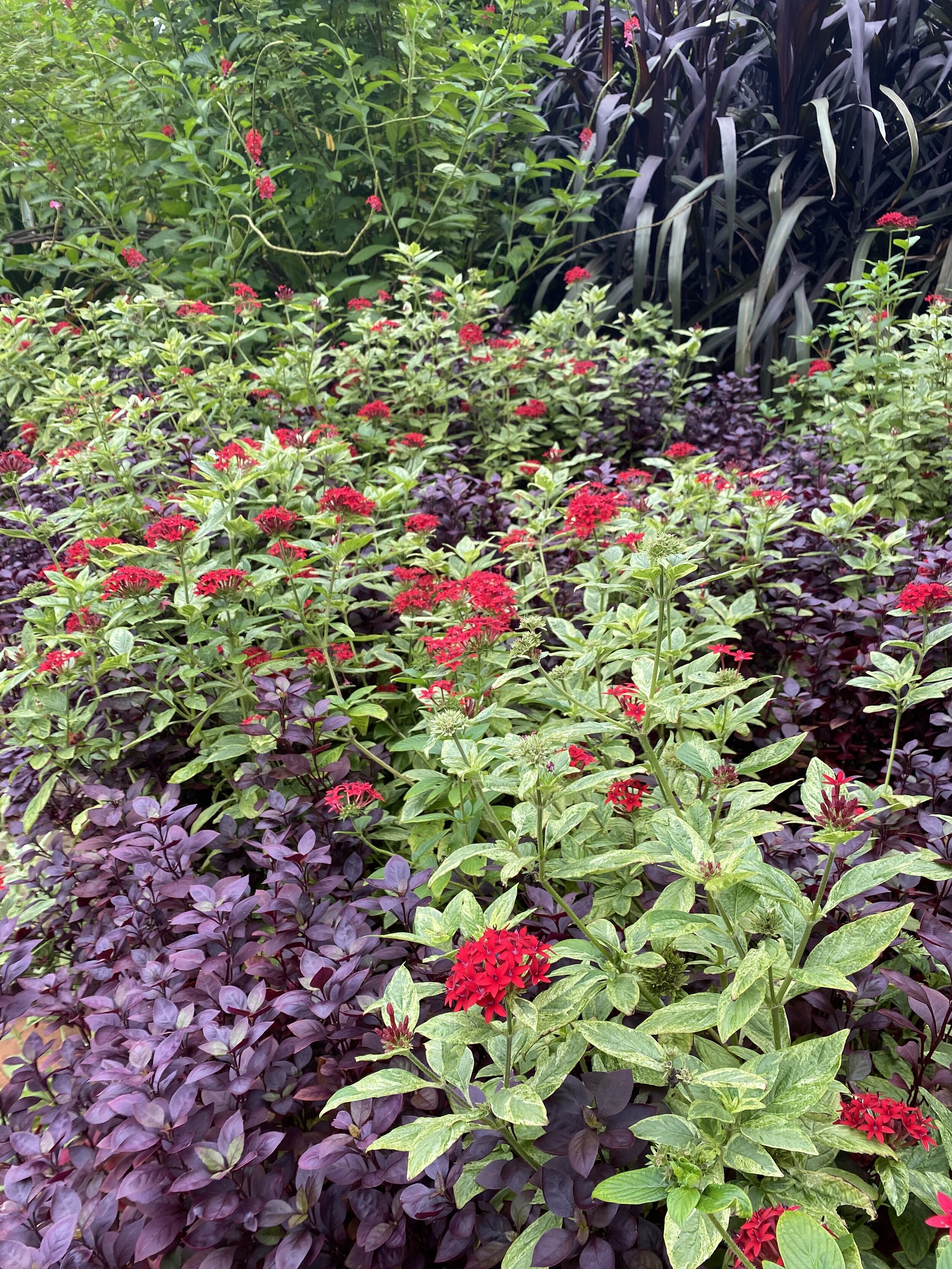Pentas Lanceolata, egyptian starcluster
/By Ciera Anderson
Pentas lanceolata, (Egyptian starcluster) have been considered a garden favorite for years. Originating from Africa and small parts of western Asia, these flowering annuals do wonderful in our Texas climate (University of Connecticut, 2020). They have a distinct cluster of 5 petaled, star-shaped, tubular flowers that sport a bright red, pink, white, or lavender color. Pentas lanceolata belong to the Rubiaceae family, which is also commonly referred to as the Madder or Coffee family (Green and Vibrant, 2019). There are many cultivars and varieties with some of the most popular being Pentas ‘Graffiti Lipstick’, Pentas ‘Starcluster White’, and Pentas ‘Falling Star Pink Bicolor’ (Costa Farms, 2020). These beautiful colors attract pollinators, especially butterflies and hummingbirds (Costa Farms, 2020). This shrub loves the sun but can also grow well in partial shade as long as it has 3 to 6 hours of good sunlight (Green and Vibrant, 2019). This provides lots of diversity when deciding the location of planting.
With these plants being so diverse, people use them in many different ways. As long as they are kept in moist soil and watered regularly, you can put them just about anywhere. From sunny flower beds to hanging baskets, smaller backyard patios, or even just as a border for your veggie garden. The main key to making sure these plants thrive is water. Keep in mind if they are provided with the right conditions, they can grow up to 3-to-6 feet tall (Green and Vibrant, 2019). Pentas sowed in spring will bloom all summer long and well into fall, making them attractive additions. They do best in zones 10 and 11, which means a hard freeze in late fall is likely to kill them off in zones further north.
This annual tends to have bright, slightly hairy leaves underneath its cluster of blossoms. Its leaves are considered ovate, and are prominently veined. Pentas are usually known to be disease and pest free, but there are a few common obstacles a weaker plant can develop. Aphids can target this plant and suck the sweet sap out of their leaves. These pests are relatively common on many plants and thrive in the hot months of summer. Another major pest that pentas battle are spider mites, which can be identified by web like structures on the leaves, and many small white spots on the leaf. The best way to see these pests is with a magnifying glass since they are so tiny. Both of these pests are sap suckers, and will cause leaves to turn a yellow color and eventually drop off (FloraStore B.V.). If you monitor your pentas regularly and use insecticides when necessary, this is an easy problem to solve. Strong and well established pentas are less likely to develop any kinds of infestations.
Overall, Pentas lanceolata are a great addition to any landscape style. They pair beautifully with many other flowering annuals like Angelonia angustifolia, Euphorbia hypericifolia, or Agapanthus africanus . With the duration of their blooming period who wouldn't want some of these stunning flowers incorporated in their flower gardens!






